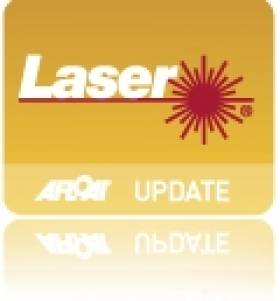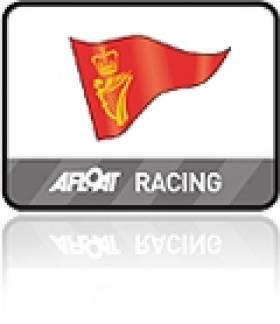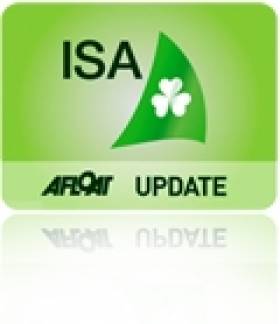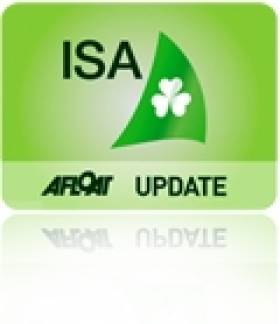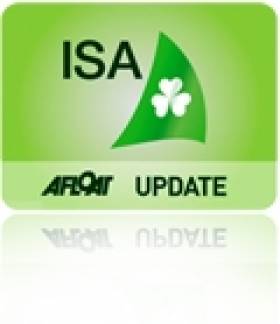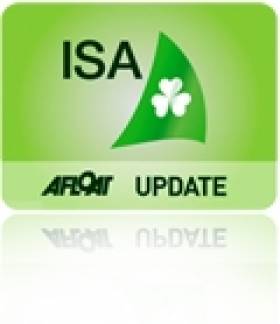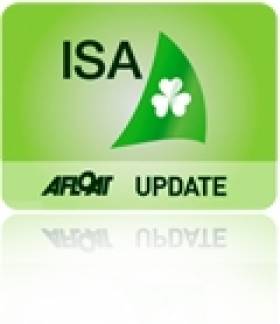Displaying items by tag: Nick Walsh
#laserulsters – Royal Cork's Nick Walsh was the winner of the Ulster Laser Championships staged by Lough Erne Yacht Club in the last weekend of April. The three rig event provided racing for 4.7s, radials and full rigs. After six races over the two days in light and fickle conditions (with the odd 20knt squall thrown in for good measure) Royal Cork's Richard McGinley was crowned Ulster 4.7 Champion with three firsts, a second and sixth (discarding an OCS). Clubmate Nick Walsh was also crowned Ulster Champion in the Standard Rig with five firsts and a second. The radial title also went to the south coast with Ciaran Finnegan of Waterford Harbour Sailing Club winning by four clear points from Strangford Lough's Laura Gilmore. Full results are downloadable below as a pdf file.
Royal Cork Aims for Biggest Ever National 18 Turnout
The Royal Cork YC aims to host the largest ever gathering of National 18's this summer. The 2011 class championship, better known locally as the Cock O' The North, will take place at RCYC in Crosshaven from Sunday 24th to Friday 29th July. In excess of 50 boats are expected to participate. Latest Royal Cork News here.
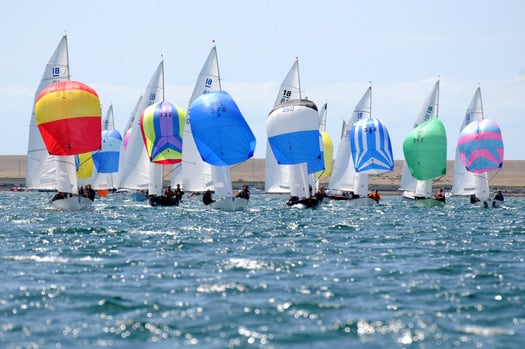
The class has roots all over Ireland and the United Kingdom. Traditionally the event sees entries from Scotland, London, Cork and Isle of Man. While strong numbers will travel as always from those centres, a feature of this year's event is the addition of entries from Lymington, Gloucester, Swansea, Lough Derg, Lough Neagh, Waterford, Schull, Ballydehob and Baltimore.
The event will cater for all National 18s whether old or new. The fleet will have three distinct divisions at this year's championships. The modern fleet will be known as Ultimate's, with the older fibreglass boats going into the Penultimate division while the original wooden clinker boats will race in the Classic division.
At the front of the ultimate fleet the competition will be intense with Anthony Ellis and crew from the Isle of Man doing their best to retain the crown that they won on home waters last season. However they will face a huge challenge with the likes of Colin Chapman, Nick Walsh and Tom Crosbie from the host club as well as the Barry brothers, Colin and Ewen from Monkstown Bay.
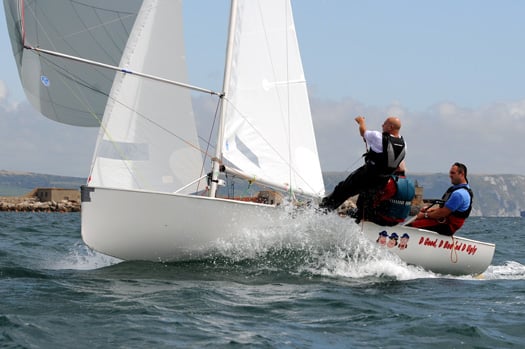
In the penultimate's class the fleet is seeing many older fibreglass boats being refurbished and brought out for the event. Expect to see Willie Healy on 'Break Even' and Grattan Roberts on 'Manniken P' feature strongly.
While the intention among the classics is that racing will not be as intense this division expects to see approximately ten boats from both home and abroad. Wolfgang Felder is travelling from Germany to participate alongside well known Cork sailors like Dick Gibson, Dan Cross and Tom Kirby. An interesting piece of history is that John Murphy of Baltimore SC will race in 'Tornado' which was the first winner of the Cock O'The North back in 1952.
Many former 18 sailors are making their way back to the class in recent times. The likes of John Crotty, Patsy O'Mahony and Bobby Kerr are expected to make it to the start line for this season to add a further element of experience to the fleet.
Among the many trophies to be raced for will be two trophies originally won by the late Richard Lane in Doldrum at the 1961 Championships sailed at Mumbles. The Lane family has kindly donated the trophies to the class and they will be raced for 50 years after Doldrum swept the board at the Welsh venue. While there has been no 18 activity at Mumbles in recent years it is expected that a crew from the club will race this year after the launch of a new pilot project by the class to stimulate 18 sailing in Wales.
Another interesting note to this event is the recent approval of carbon fibre masts and with up to 20% of the fleet already having switched over, eyes will be focused on any improved performance.
Like any good sailing event as much effort has been put into the social aspect. A full week's social programme has been planned ranging from a Christmas party to the Class Dinner. The Class Dinner will also serve as a reunion for former 18 sailors and it is expected that 300 people will attend what will be an historic occasion. All this sailing and socialising is thirsty work and so the class has commissioned a special beer for the week to be known as 'Cock a Doodle Brew' to mark the event.
For more information on the event go to www.national18.com.
Nicholas O'Leary Produces Hat Trick in All Ireland Re Run
The All Ireland Championships at Kinsale today turned out in the end to be an event well worth the long wait and provided thrilling competition from start to finish writes Claire Bateman. It was sailed in a three metre swell between the Bullman Buoy and Sandycove. It was particularly difficult for the Race Committee under PRO David O'Brien in the continuous undulating swell.

Nicholas and his winning crew Adam McCarthy and Alex Barry in Kinsale this afternoon. Photo: Bob Bateman. More photos on the gallery HERE
After four races the Race Committee were calculating the results only to find that they had three Royal Cork crews tied on five points each including the twice previous holder Nicholas O'Leary, his father Anthony and Niall Kenefick who was sailing with his two sons David and George. And so the competition went down to the wire with the result dependant on the final race. Nicholas O'Leary triumphed taking his third consecutive Championship win, the first ever to do so, followed by Anthony O'Leary in second place and Niall Kenefick taking third place.
This exceptional result finally puts to bed any previous suggestions that local knowledge could prevail in the results by the competition taking place in the home club of the winner.
In his acceptance speech Nicholas said it was very difficult in the first race today to have to protest his father who was coming in on port to the mark but with a twinkle in his eye said it had to be done!
After it was all over one wag suggested to Nicholas that he should now seek to keep the trophy as he had won it three times in a row. The reply should be rather interesting!
Speaking at the reception afterwards the ISA said the three year sponsorship had now expired so they will be looking for new sponsors but such was their confidence in the continuance of the fleet they have already ordered new sails.
Results:
1. Nicholas O'Leary
2. Anthony O'Leary
3. Niall Kenefick
4. Garrett May
5. James Espey
6. Nick Walsh
7. Niall Henry
8. Ewen Barry
All Ireland Champs Move to Kinsale
The re-run of the All Ireland Sailing Championships will take place in Kinsale and not Crosshaven on November 20th according to a press release from the Irish Sailing Association published today.
A minimum of three races must be completed for the competition to conclude and the ISA Helmsman's Trophy awarded.
The final, originally scheduled to take place in Royal Cork Yacht Club on the 26th of September, had to be abandoned due to an absence of wind.
The competition will be sailed in the ISA SailFleet J80's which are currently based in Kinsale Yacht Club. Due to the difficulty in safely sailing the fleet from Kinsale to Crosshaven the venue had to be changed, however the host club remains Royal Cork Yacht Club who are now kindly assisted by Kinsale Yacht Club.
8 teams will be competing for the ISA Helmsmans Trophy. As this competition is recognised as a new event, no previous points shall be carried forward. Each competitor begins with a blank score card.
The finalists are:
Anthony O'Leary
Ewen Barry
Garrett May
James Espey
Neil Kenefick
Niall Henry
Nicholas O'Leary
Nick Walsh
Who'll win? We're starting a readers poll on Monday. Click back to cast your vote!
All Ireland Champs to Sail Again on November 20
After an abandonment due to lack of wind in early October and a long wait for news of a new date, the Irish Sailing Association has announced its All Ireland Championship will now take place on November 20th.The competitors have agreed to be available on this weekend to sail but the announcement on the ISA website does not name the venue, presumably the original location, Cork Harbour. the finalists and drawn boats are:
Final Flight
1. McCann Fitzgerald Anthony O'Leary
2. D/L Marina Neil Kenefick
3. O'Leary Insurance Ewen Barry
4. Smyths Toys Nicholas O'Leary
5. Dyno Rod Garrett May
6. Smart Niall Henry
7. KPMG James Espey
8. Irish Examiner Nick Walsh
ISA Seek New Date for All Ireland Event
Following the abandonment of the All Ireland Sailing Championships at Royal Cork last weekend due to lack of wind the Irish Sailing Association (ISA) has yet to announce dates for the rescheduled event. An autumn date to accomodate all concerned is the objective, the association said yesterday. The eight finalists involved are; Anthony O'Leary, Neil Kenefick, Nicholas O'Leary, Garrett May, Niall Henry, James Espey, Nick Walsh and Ewen Barry.
All Ireland Final Date Yet to be Agreed
Eight helmsmen, including the double winner Nicholas O'Leary will be invited to participate in a new final consisting of five races. The eight finallists are
Anthony O'Leary
Neil Kenefick
Nicholas O'Leary
Garrett May
Niall Henry
James Espey
Nick Walsh
Ewen Barry
Forum Discussion HERE
Cork Harbour's Walsh on Top After First Round of the 'All Ireland'
Local helm Nick Walsh representing the National 18 dinghy class is guaranteed a place in the final of the All Ireland sailing championships this weekend after wins this afternoon. Conditions were excellent with northerly breezes and flat water and a strong flood tide. Joining him on Sunday in the finals is Sligo's Niall Henry (GP14). Racing continues tomorrow in Cork harbour and the competition for the Junior and Girls Fleets will also get underway. Bob Bateman's photos from this afternoon's flight action below:
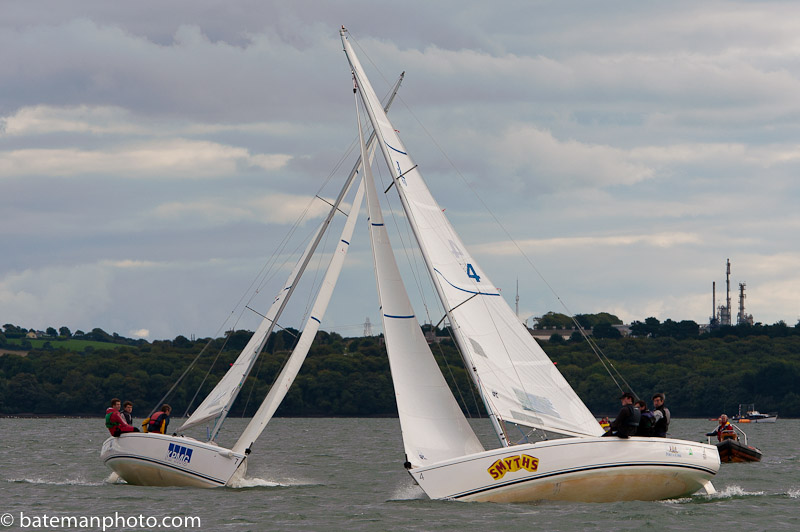
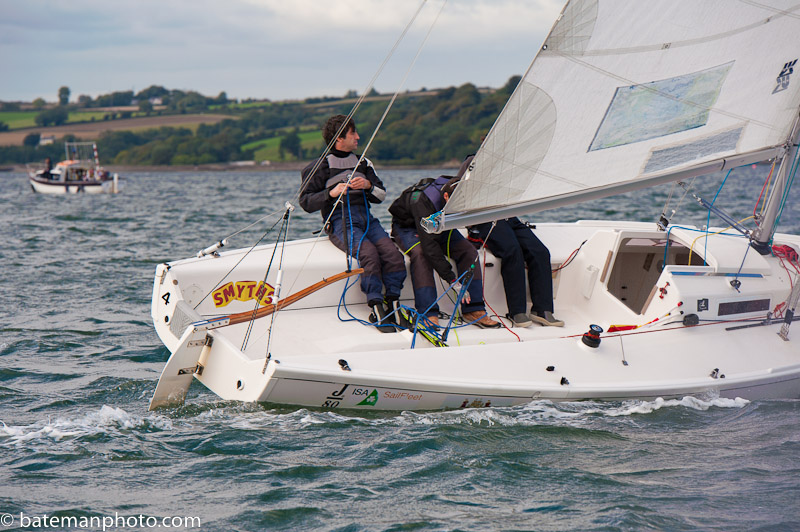
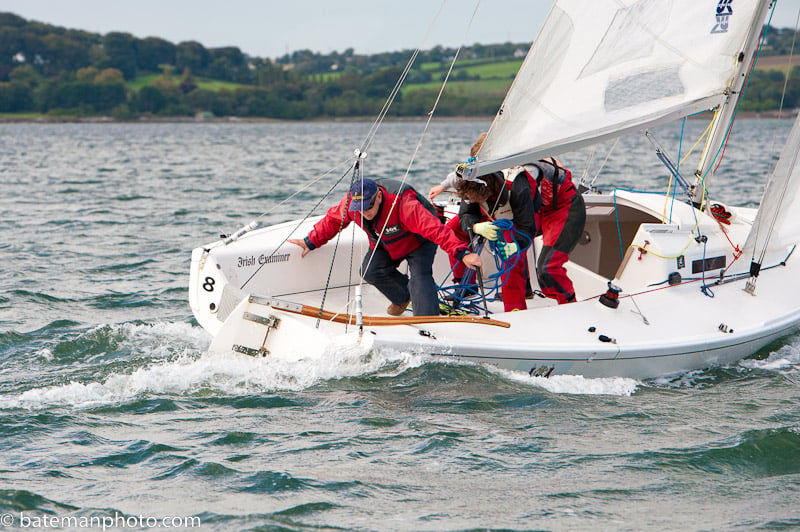
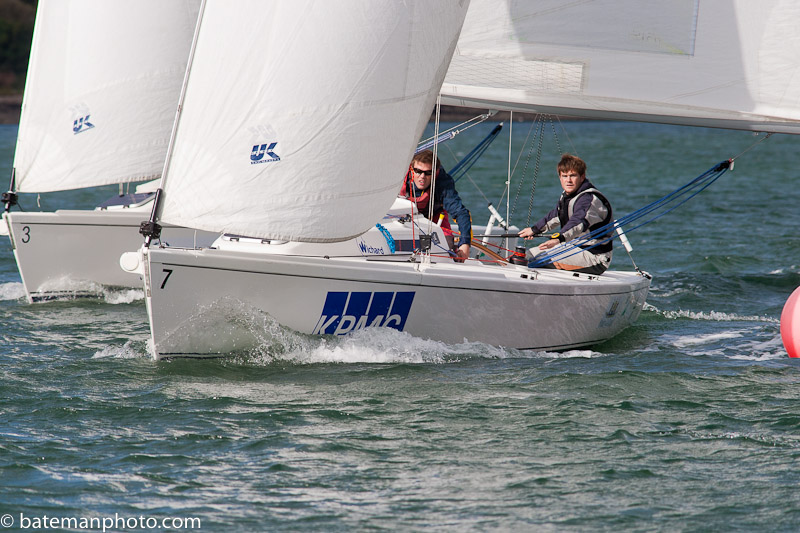
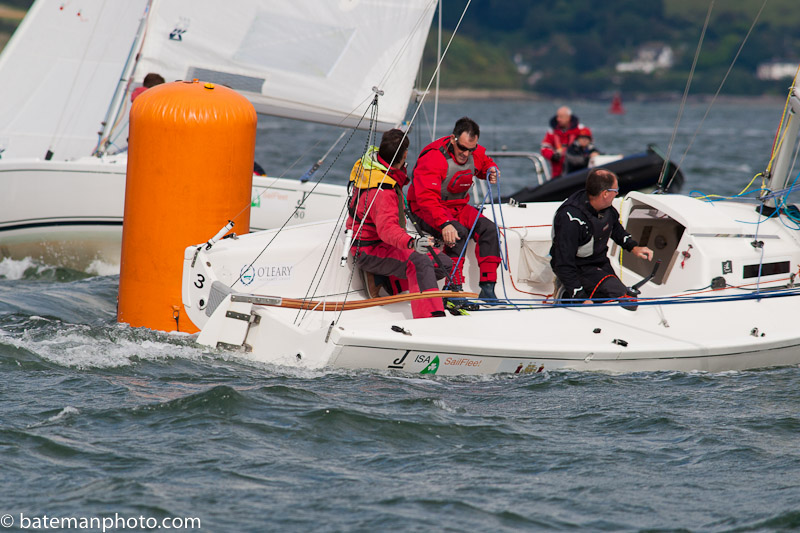
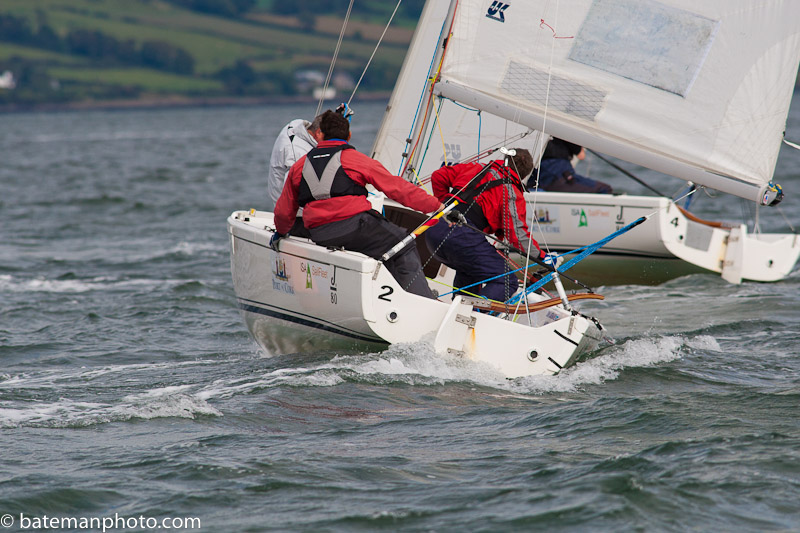
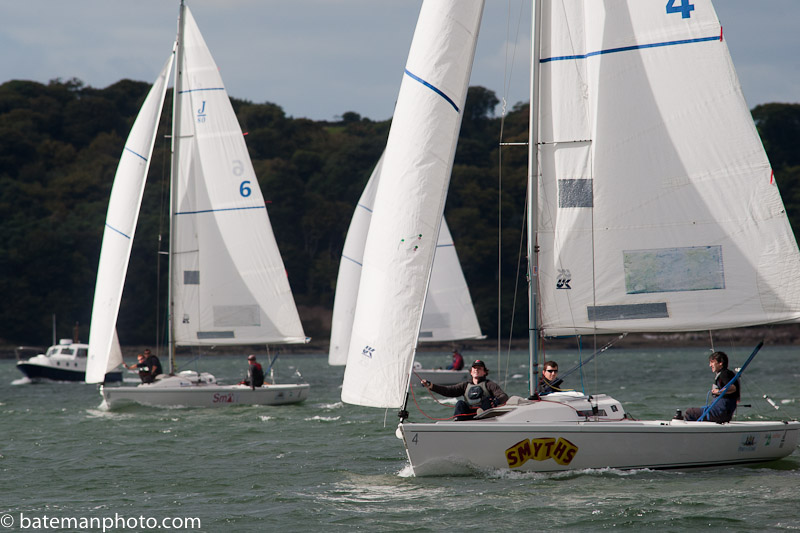
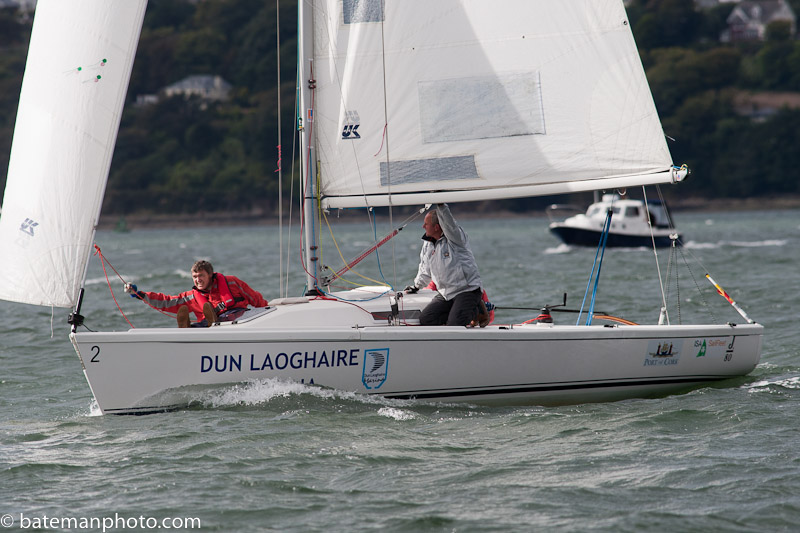
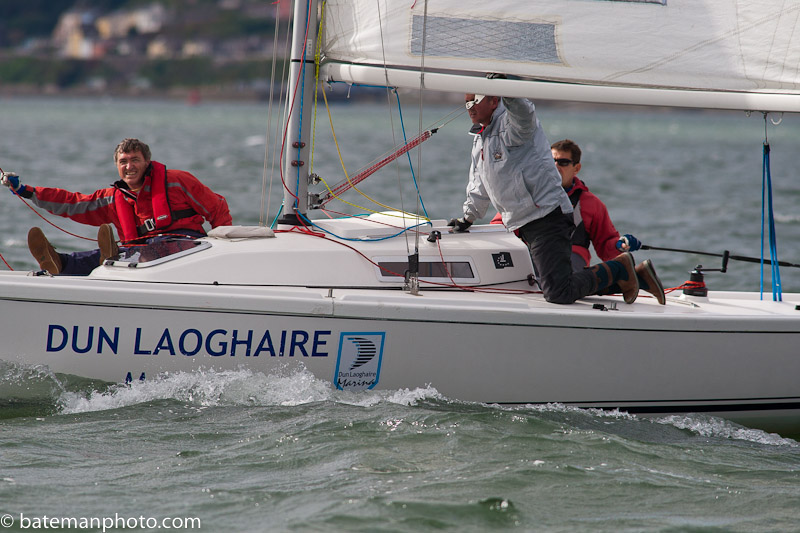
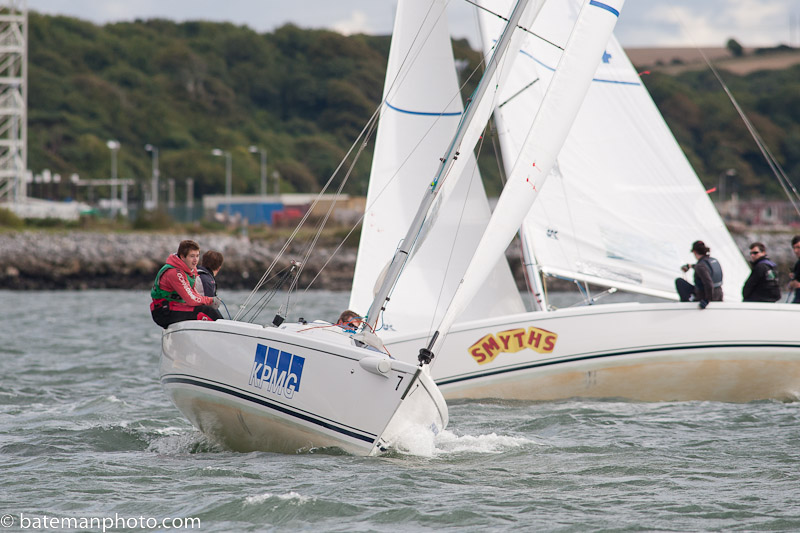
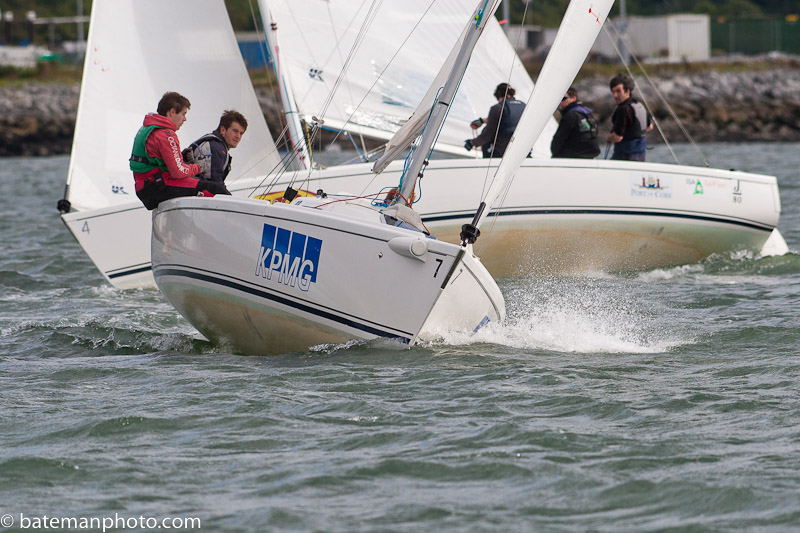
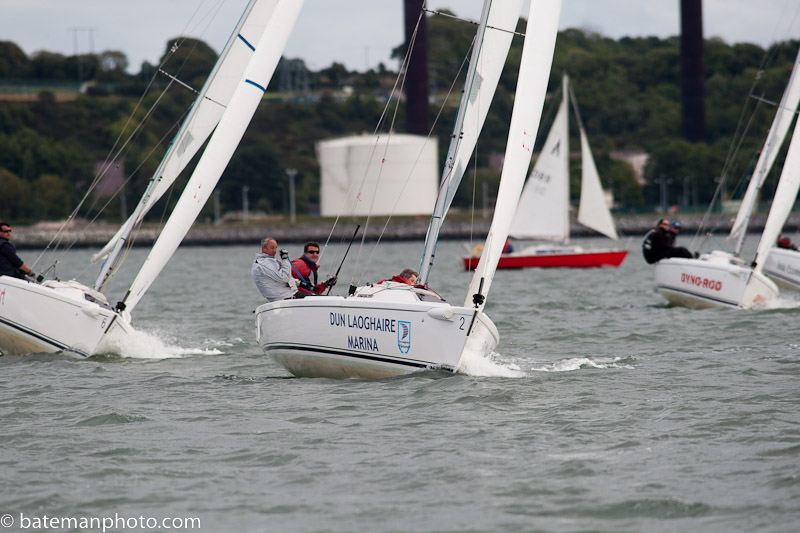
Provisional results for Flight 1 Race 3
|
Boat |
Helm |
Place |
|
2 |
Nick Walsh |
1 |
|
3 |
Conor Turvey |
2 |
|
4 |
Niall Henry |
3 |
|
6 |
Garrett May |
4 |
|
7 |
Simon Mitton |
5 |
|
5 |
Clem McElligott |
6 |
|
8 |
Pat O'Neill |
7 |
Provisional results for Flight 1 Race 2
|
Boat |
Helm |
Place |
|
2 |
Nick Walsh |
1 |
|
4 |
Niall Henry |
2 |
|
6 |
Garrett May |
3 |
|
3 |
Conor Turvey |
4 |
|
7 |
Simon Mitton |
5 |
|
8 |
Pat O’Neill |
6 |
|
5 |
Clem McElligott |
7 |
Provisional results for Flight 1 Race 1
|
Boat |
Helm |
Place |
|
7 |
Simon Mitton |
1 |
|
4 |
Niall Henry |
2 |
|
6 |
Garrett May |
3 |
|
2 |
Nick Walsh |
4 |
|
5 |
Clem McElligott |
5 |
|
8 |
Pat O’Neill |
6 |
|
3 |
Conor Turvey |
7 |


























